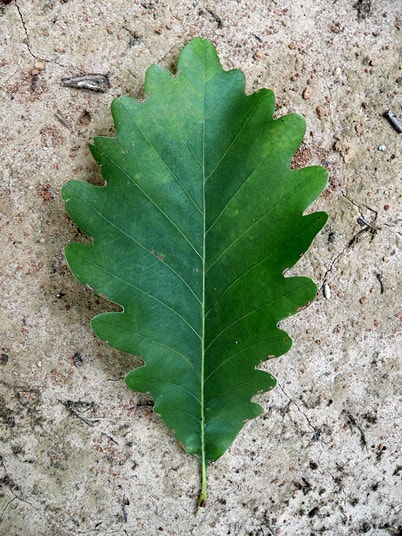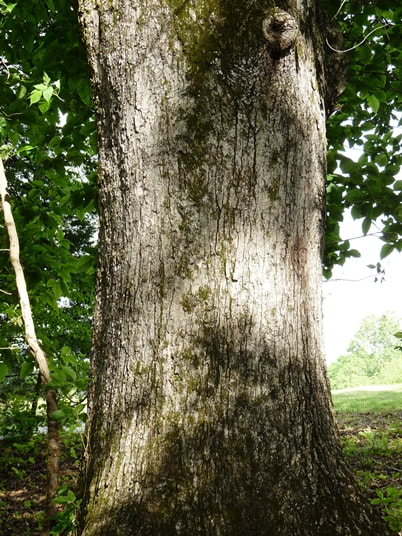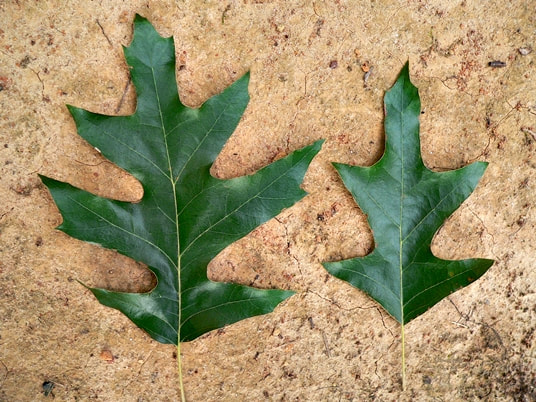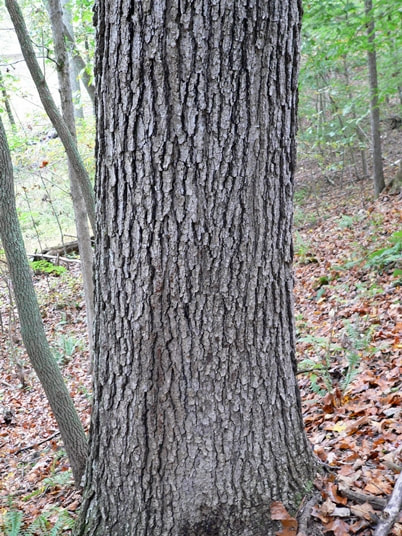Cumberland/Ridge & Valley Bottomlands, Floodplains, and Riparian Zones
|
This natural community includes:
1) Bottomland Forest: flat, low-lying areas that are not directly next to the river channel. They are close to the water table and occasionally to often flooded. This community is a very narrow ribbon along many rocky streams, but is fully developed and broad along some stretches of the Coosa River. Plants are adapted to shady conditions with soils that are sometimes soggy and low in oxygen. 2) Riparian zone - the strip next to the river. It is flooded often with the strongest flood waters, so plants must be strong and flexible, with many shrubs and non-woody plants. |
|
Indicator species: river birch, box elder, green ash, and sycamore.
What's special: lush vegetation and a variety of habitats that support a large diversity of animals. This includes a special "stream scour" community, which forms chute-like areas in sandstone. Rocky areas in limestone often support unusual wildflowers and ferns.
Related communities: High areas in the bottomland forest, and those farthest from the flood zone grade into Mesic Forest.
What's special: lush vegetation and a variety of habitats that support a large diversity of animals. This includes a special "stream scour" community, which forms chute-like areas in sandstone. Rocky areas in limestone often support unusual wildflowers and ferns.
Related communities: High areas in the bottomland forest, and those farthest from the flood zone grade into Mesic Forest.
|
Plants
Click on a plant name to see images. Plant are listed in alphabetical order by scientific name. Trees Box elder Acer negundo Red maple Acer rubrum River birch Betula nigra Southern hackberry/Sugarberry Celtis laevigata Musclewood/American hornbeam Carpinus caroliniana Green ash Fraxinus pennsylvanica Common silverbell Halesia tetraptera Sweet gum Liquidambar styraciflua Tulip-tree Liriodendron tulipifera Sycamore Platanus occidentalis Overcup oak Quercus lyrata Swamp chestnut oak Quercus michauxii Water oak Quercus nigra Cherrybark oak Quercus pagoda Willow oak Quercus phellos Shumard oak Quercus shumardii Black willow Salix nigra Shrubs Shrubs Tag alder Alnus serrulata Beautyberry Callicarpa americana Sweet shrub Calycanthus floridus Buttonbush Cephalanthus occidentalis Swamp dogwood/Silky dogwood Cornus amomum Stiff dogwood Cornus stricta Strawberry bush Euonymus americanus Witch-hazel Hamamelis virginia Possum haw Ilex decidua Virginia sweetspire/willow Itea virginica Doghobble Leucothoe fontanesiana Spicebush Lindera benzoin Swamp azalea Rhododendron viscosum Elderberry Sambucus canadensis Virginia spiraea Spiraea virginiana Yellowroot Xanthorhiza simplicissima Vines Ground nut Apios americana Crossvine Bignonia capreolata Trumpet vine Campsis radicans Climbing hydrangea Decumaria barbara Wild potato vine Ipomoea pandurata Climbing hempweed Mikania scandens Virginia creeper Parthenocissus quinquefolia Poison ivy Toxicodendron radicans Muscadine Vitis rotundifolia Ground Layer Wildflowers Green dragon Arisaema dracontium Jack-in-the-pulpit Arisaema triphyllum False nettle Boehmeria cylindrica Devil's-bit Chamaelirium luteum Mist flower Conoclinium coelistinum Dimpled trout lily Erythronium umbilicatum Hollow-stem Joe-pye-weed Eutrochium fistulatum Soapwort gentian Gentiana saponaria Orange jewelweed Impatiens capensis Cardinal flower Lobelia cardinalis Great blue lobelia Lobelia siphilitica Virginia bluebells Mertensia virginica Monkey flower Mimulus ringens Arrow arum Peltandra virginica May-apple Podophyllum peltatum Cutleaf coneflower Rudbeckia laciniata Broadleaf arrowhead Saggitaria latifolia Lizard's-tail Saururus cernuus Foamflower Tiarella wherryi Common wingstem Verbesina alternifolia Graminoids Bushy bluestem Andropogon glomeratus River cane Arundinaria gigantea Shallow sedge Carex lurida River oats Chasmanthium latifolium Common rush Juncus effusis Ferns Rattlesnake fern Botrypus virginianus Netted chain fern Lorinseria areolata Sensitive fern Onoclea sensibilis Royal fern Osmunda spectabilis Cinnamon fern Osmundastrum cinnamomeum New York fern Parathelypteris novaboracensis |
Representative Trees, in order by scientific name
Representative Shrubs, in order by scientific name
Representative Vines, in order by scientific name
Representative Wildflowers in order by scientific nameRepresentative Graminoids in order by scientific name
Representative Ferns in order by scientific name
|







































































